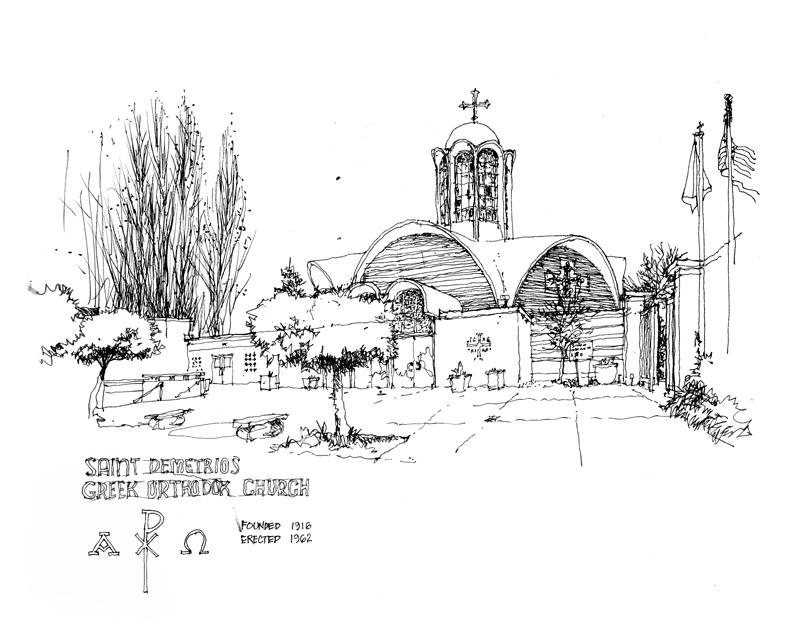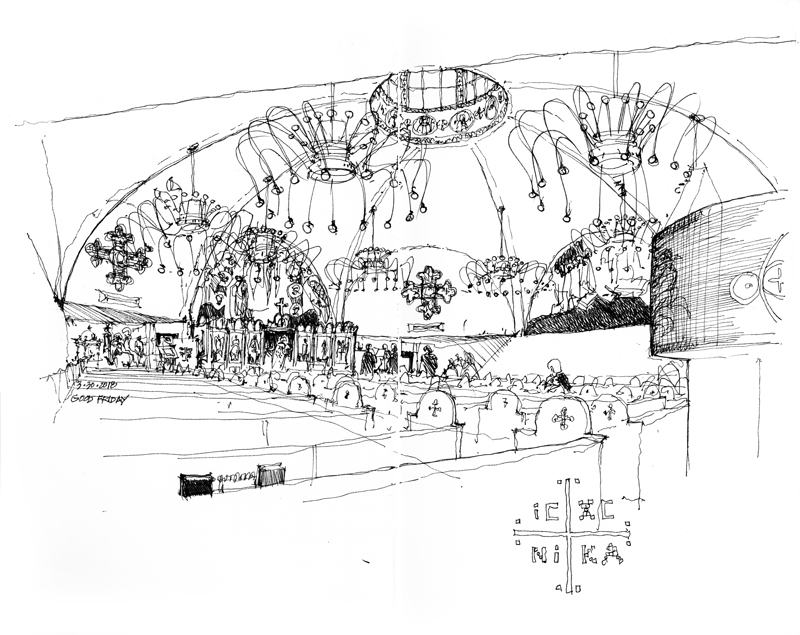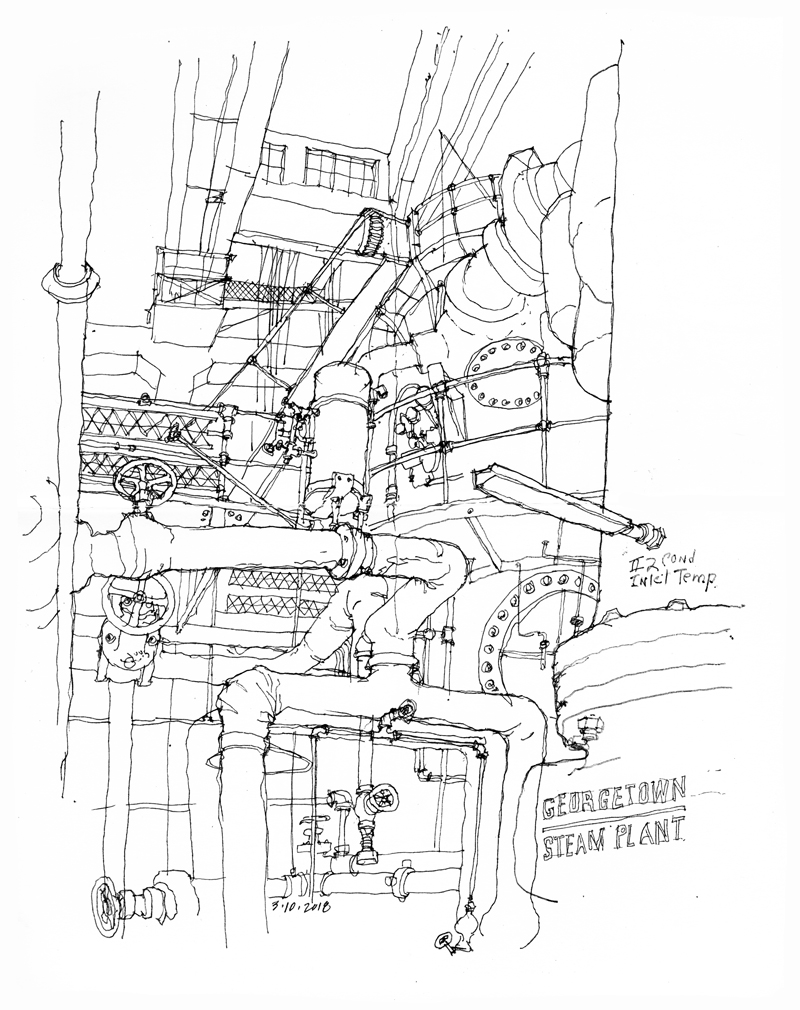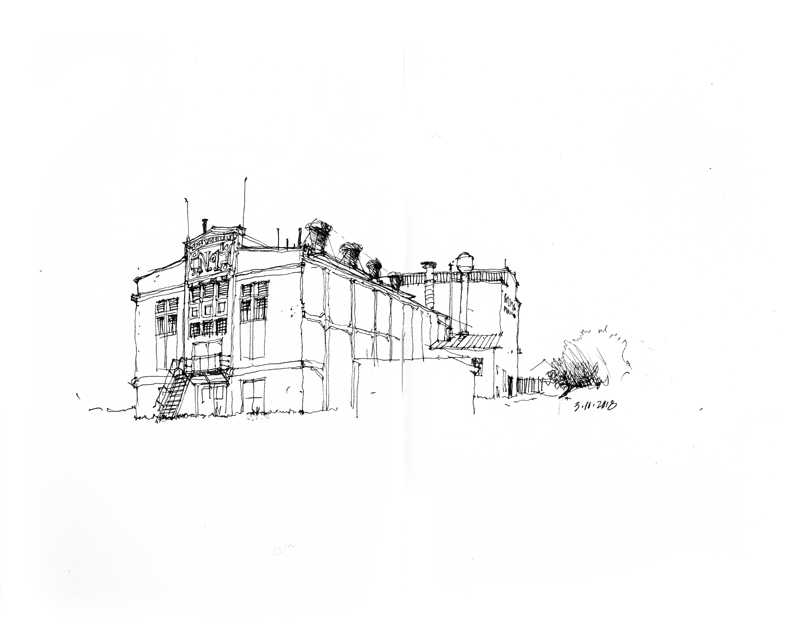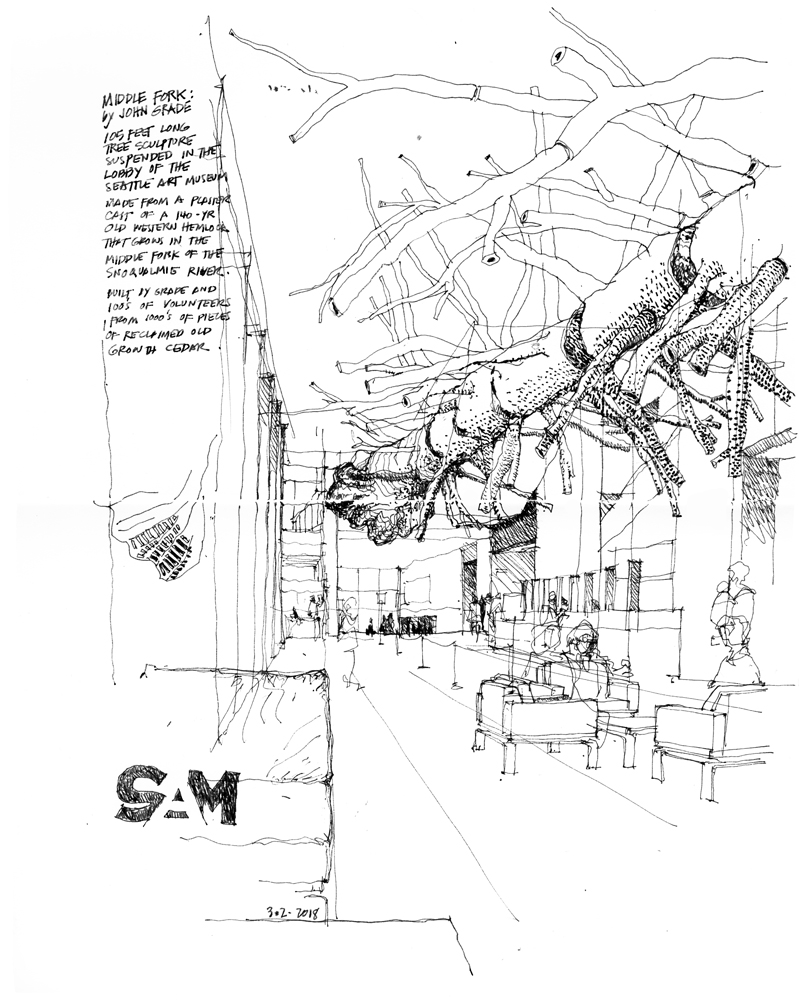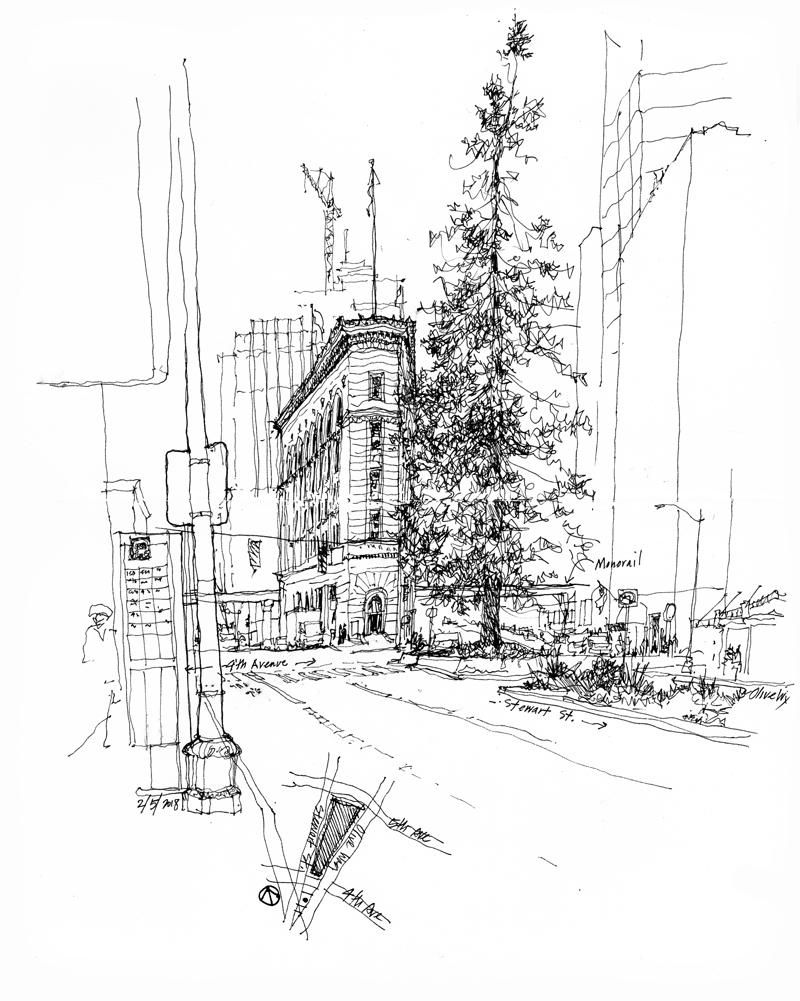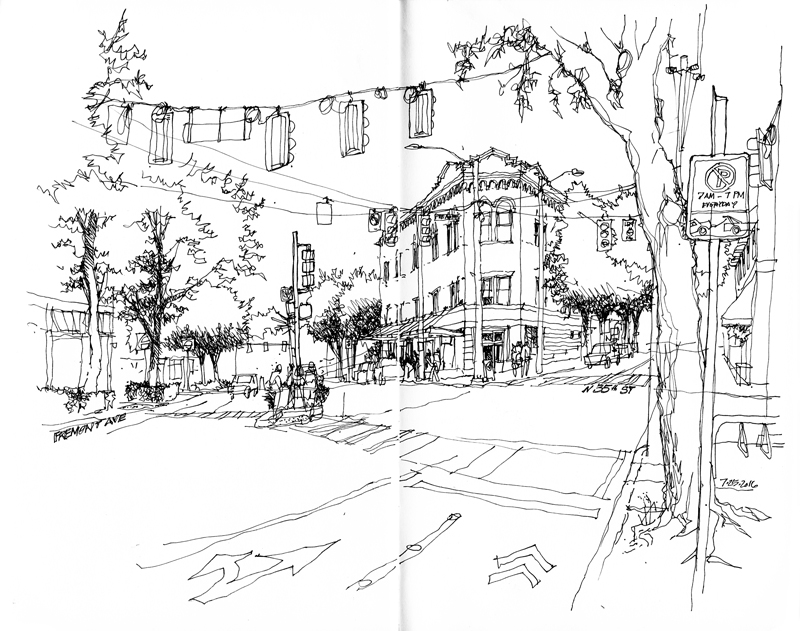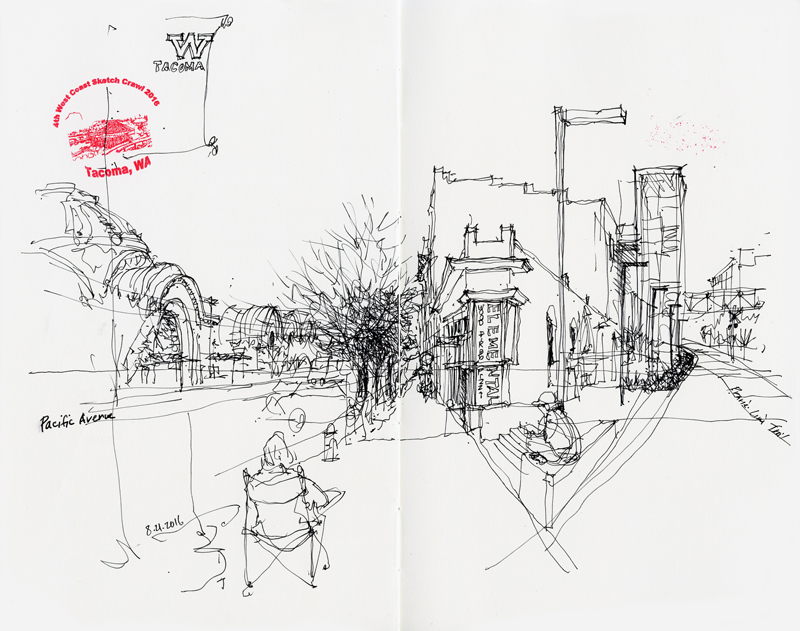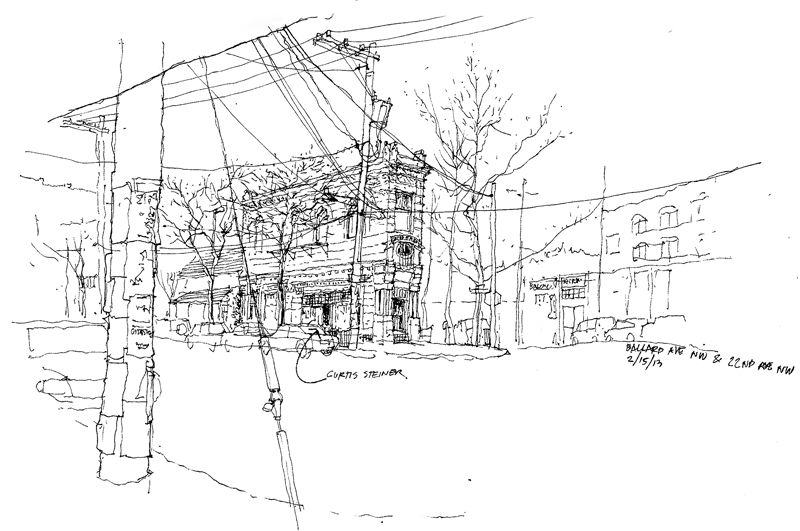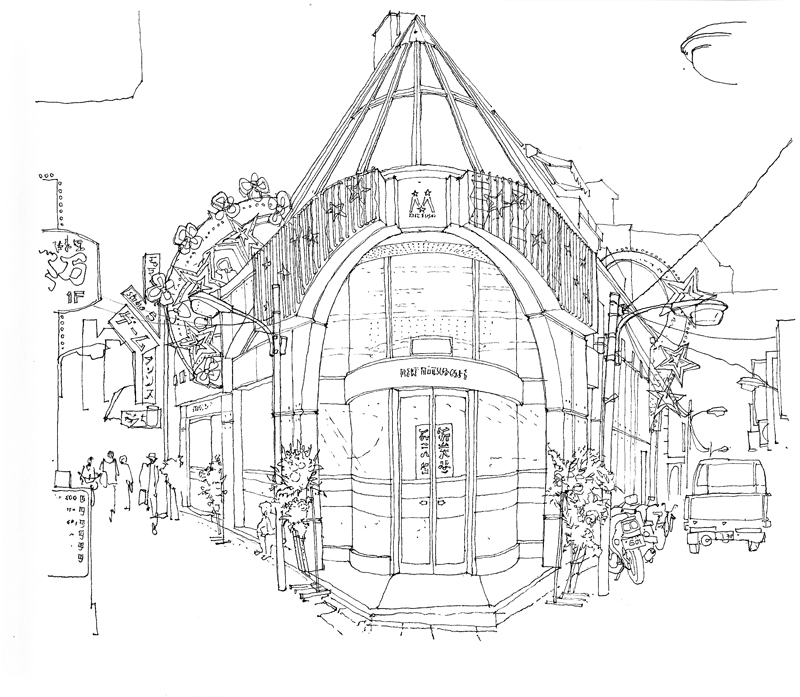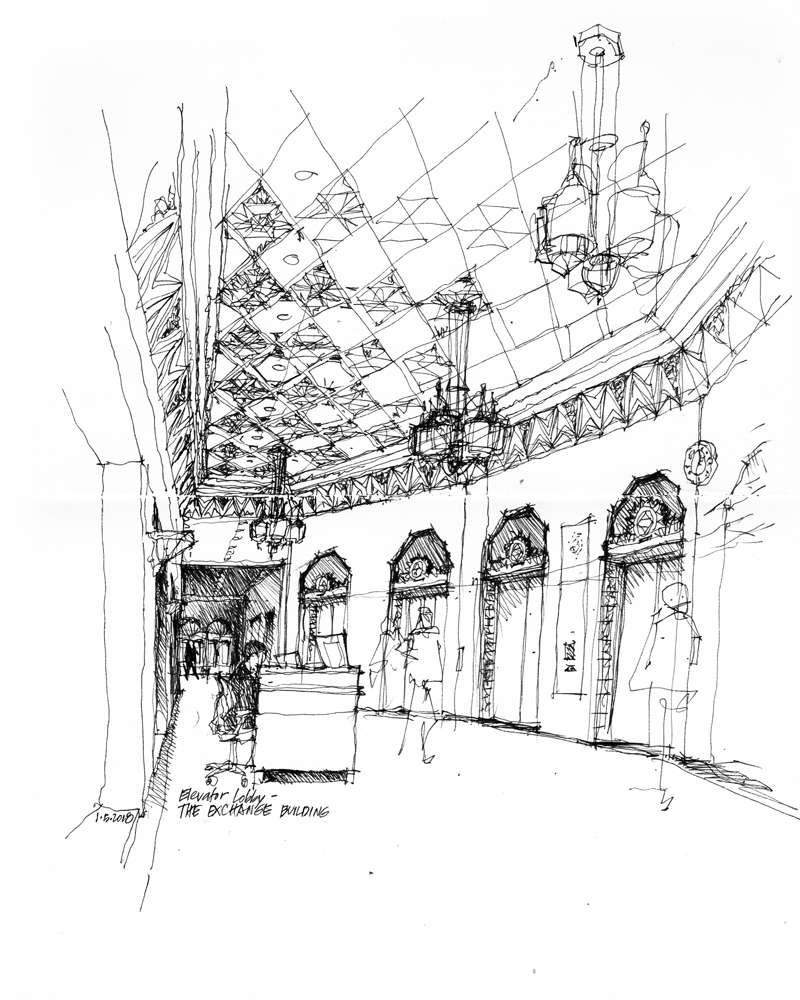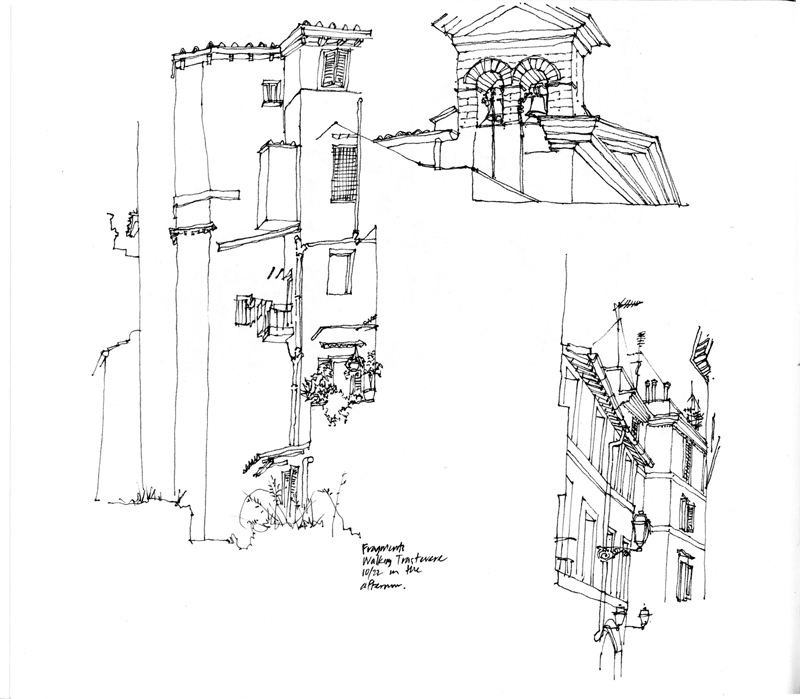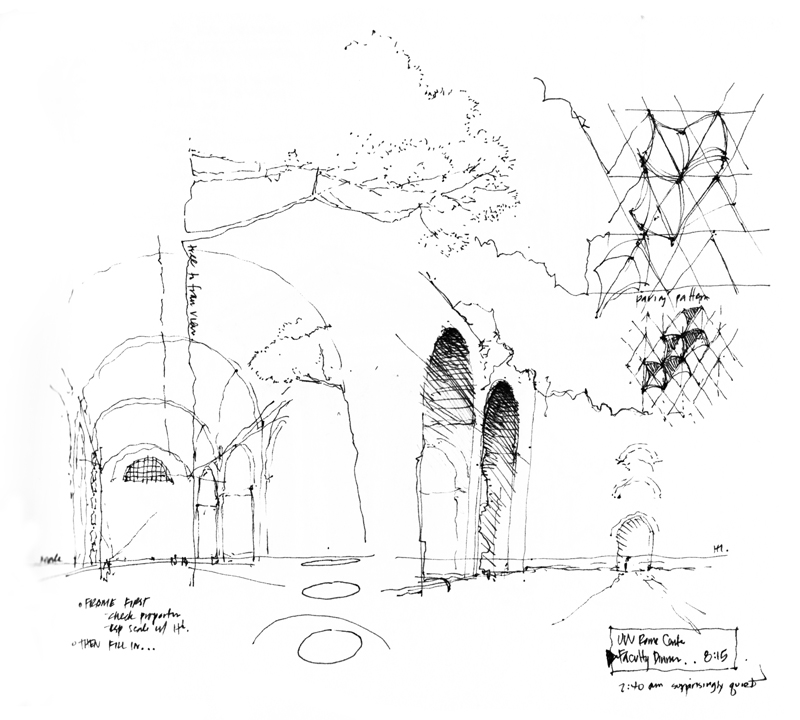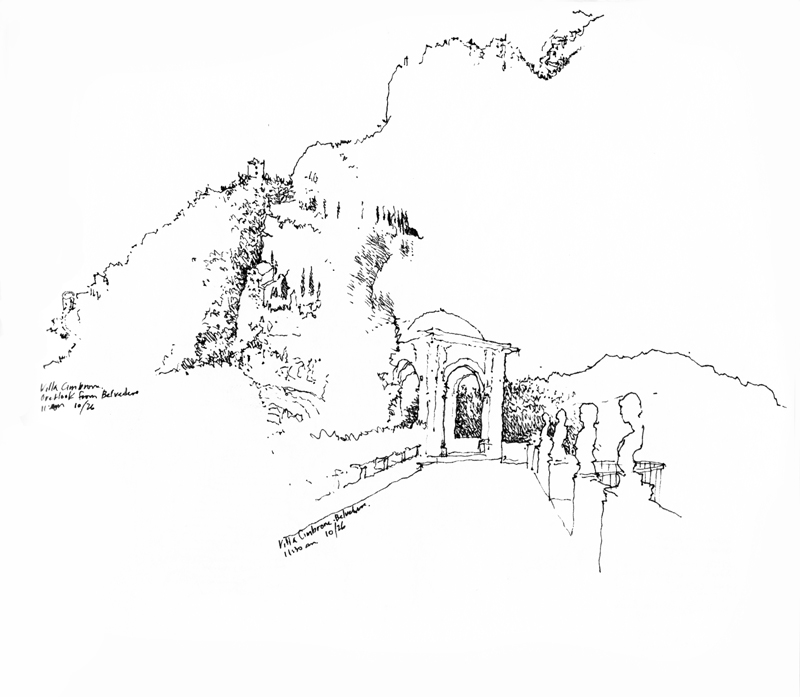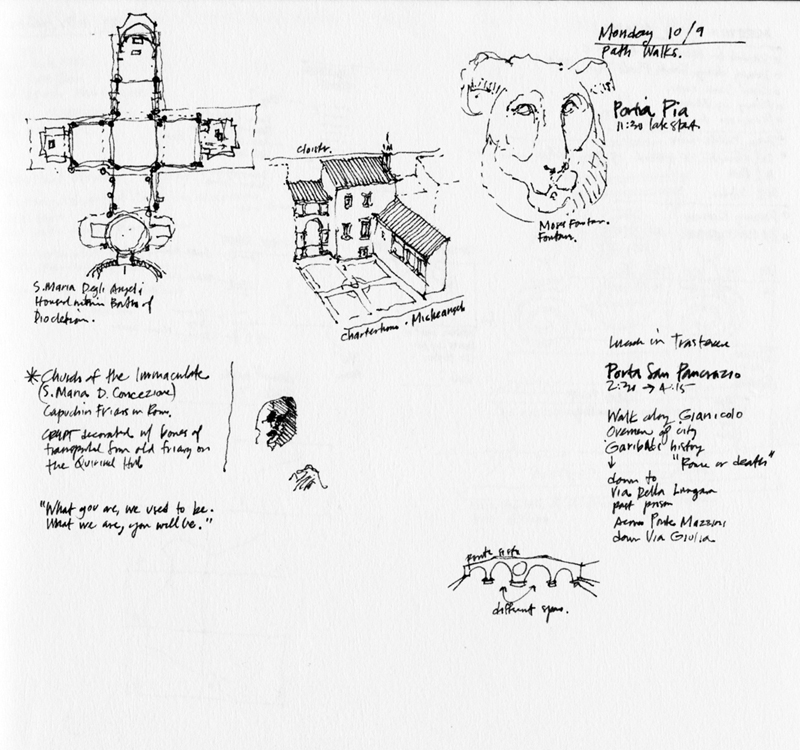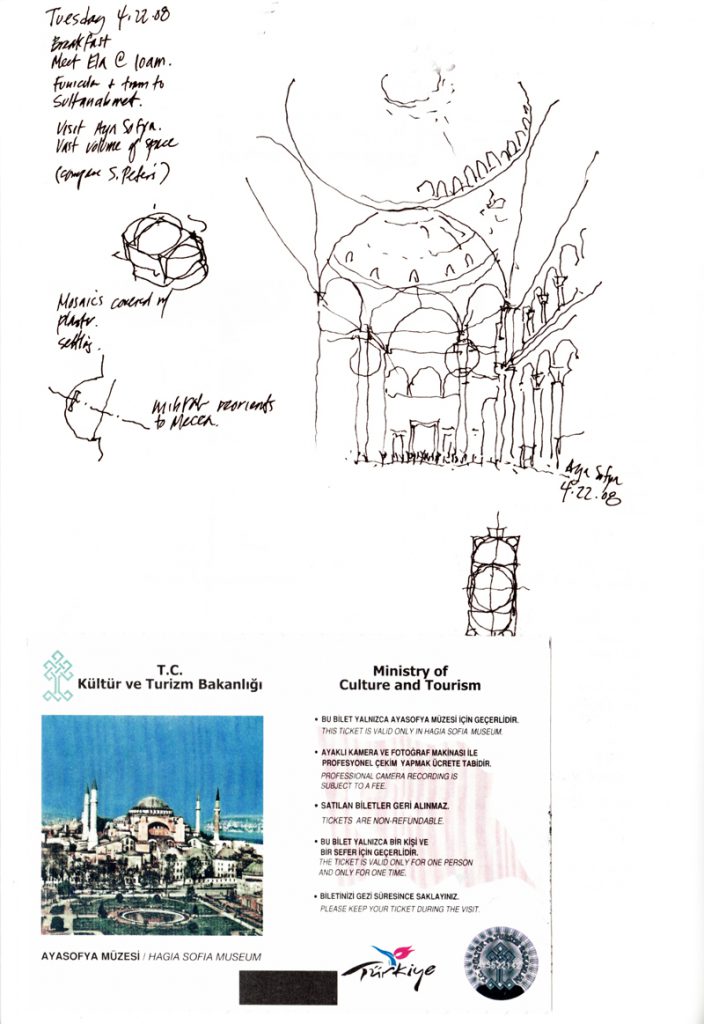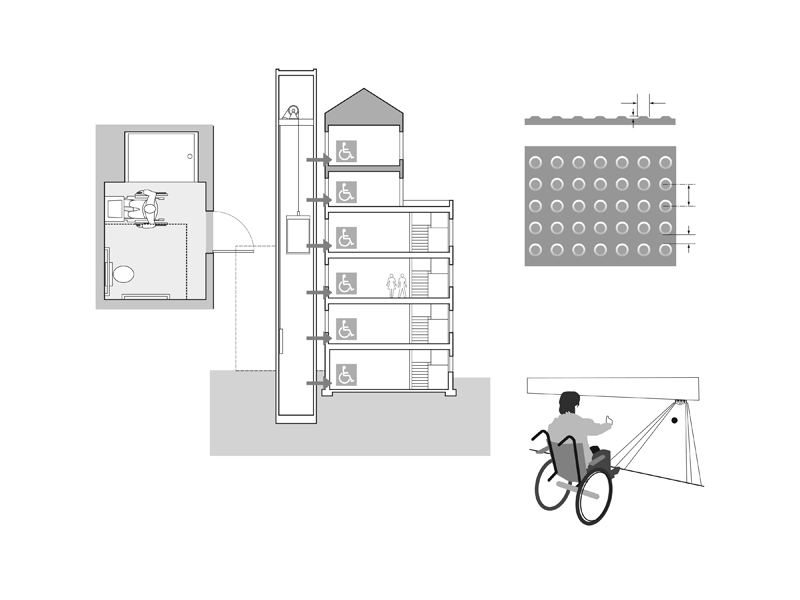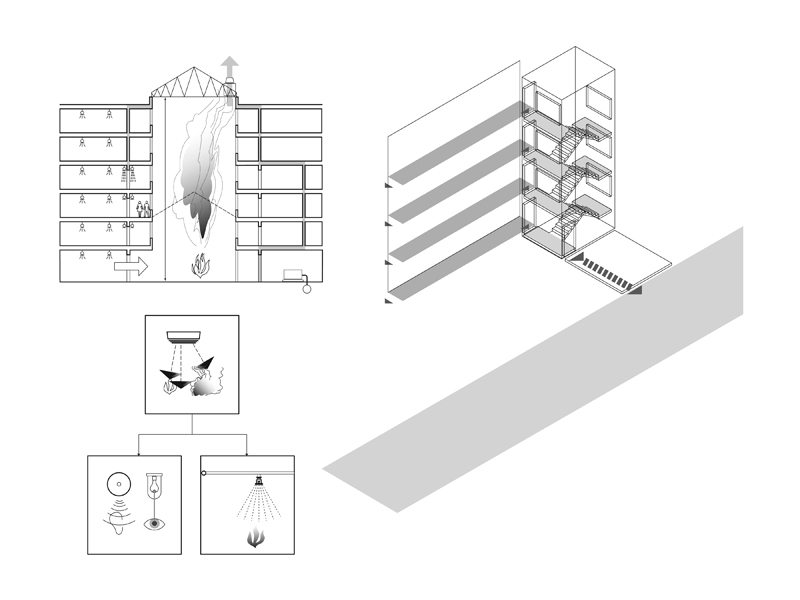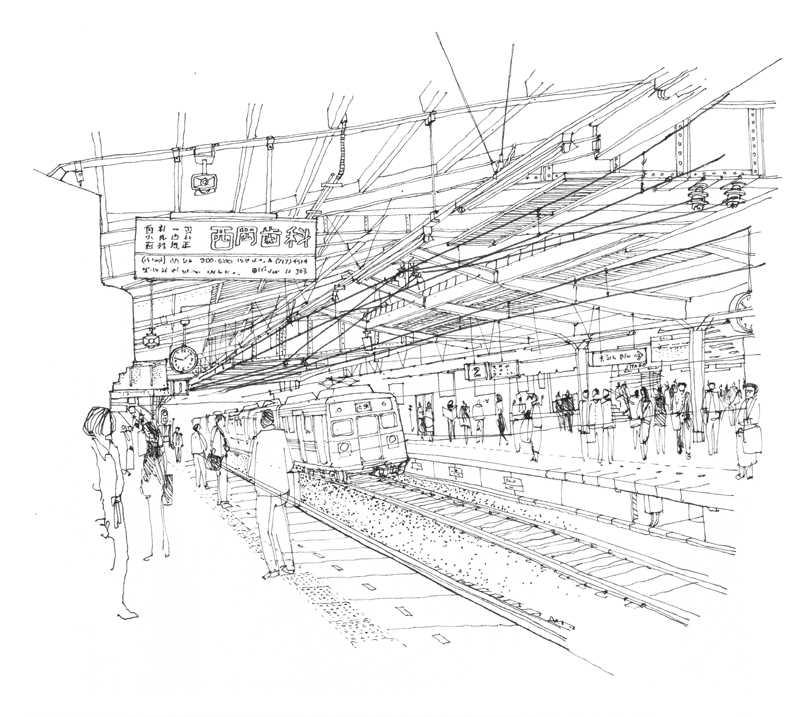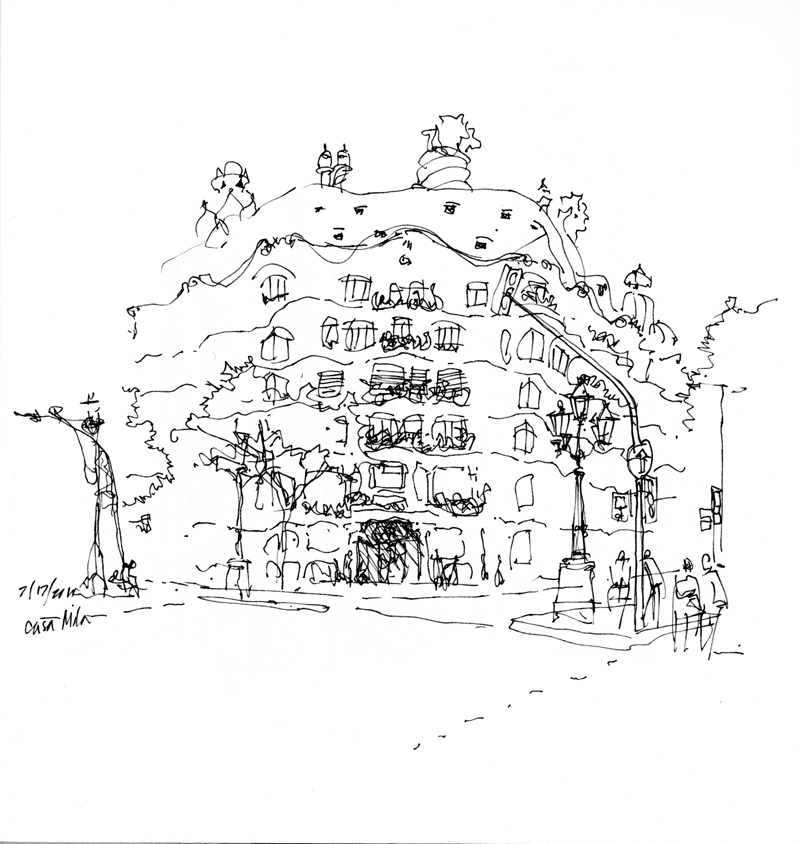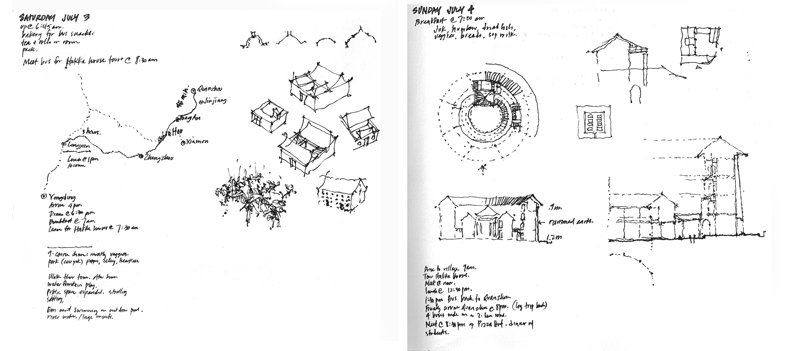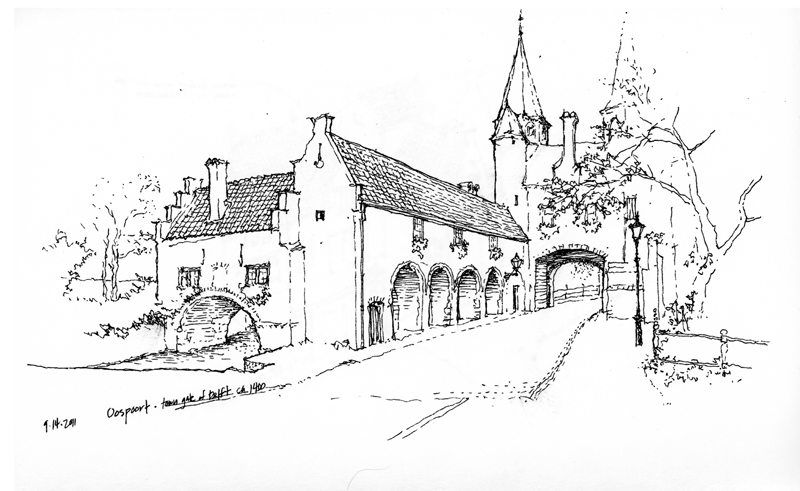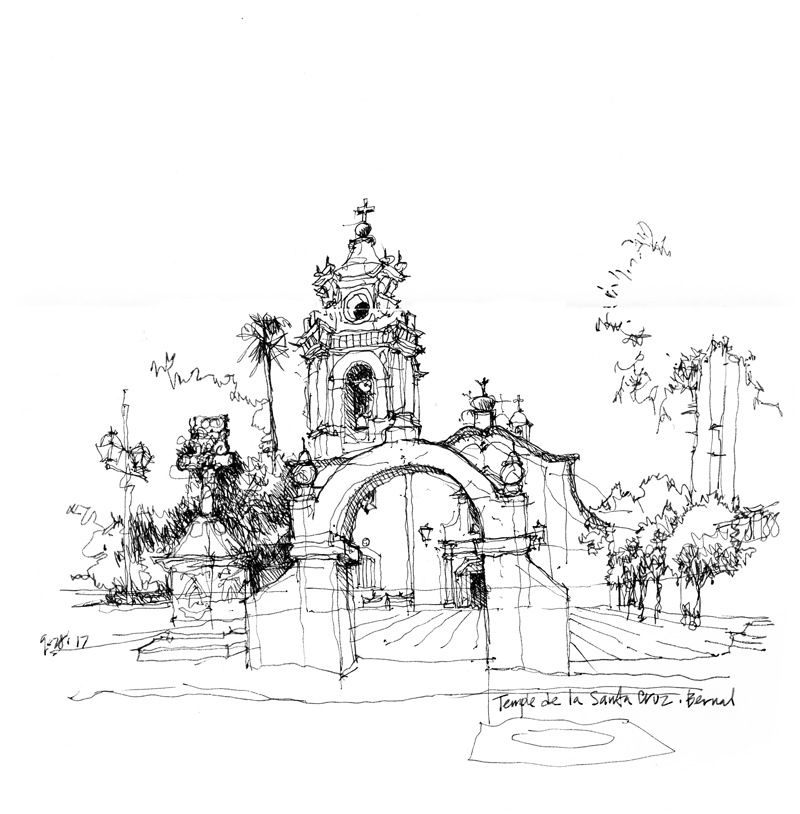St. Demetrios is part of the Greek Orthodox Metropolis of San Francisco, within the Greek Orthodox Archdiocese of North and South America. The Greek Community Association established this parish in the Cascade neighborhood in the early 20th century and named it after an icon of Saint Demetrios of Thessaloniki. Several decades later, under the stewardship of Father Neketas Palassis, the parish developed plans for a new complex, which culminated in the construction of the current church in the Montlake neighborhood. It was dedicated on March 31, 1963.
This thin-shell concrete structure was designed by Paul Thiry, a pioneer of modernism in the Pacific Northwest who was a supervising architect for the 1962 Century 21 Exposition in Seattle. At the time of St. Demetrios’ completion, the magazine Architecture West praised how Thiry “adapt(ed) materials and techniques of the 20th Century to a church that follows early Greek Orthodox architectural forms, with interior spaces dictated by centuries old liturgical forms.”

